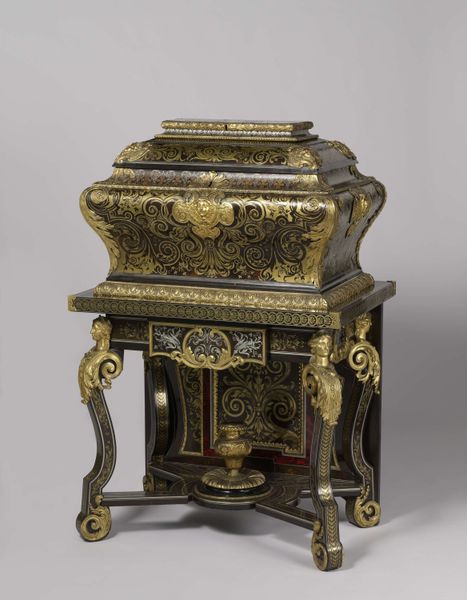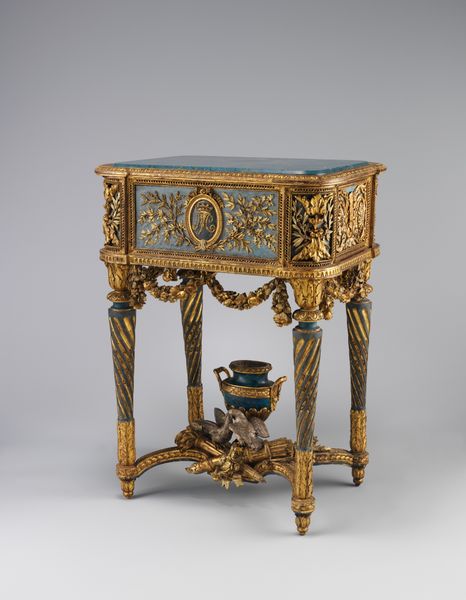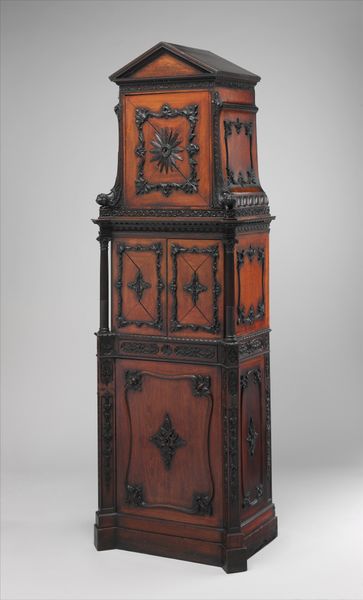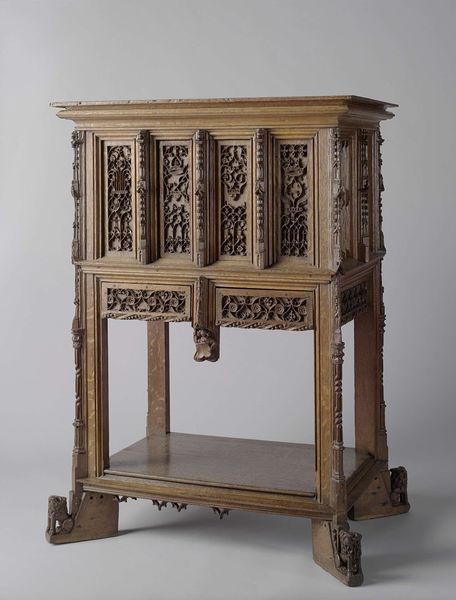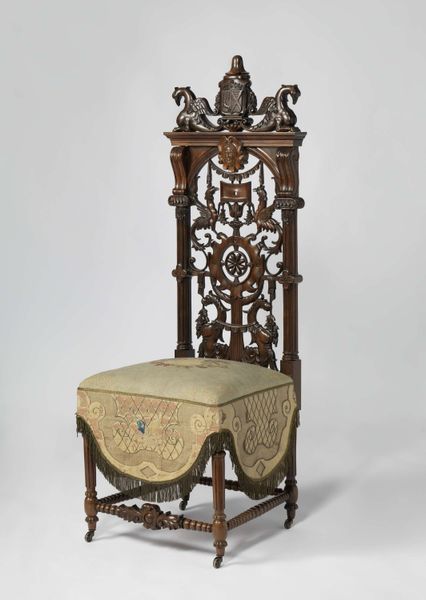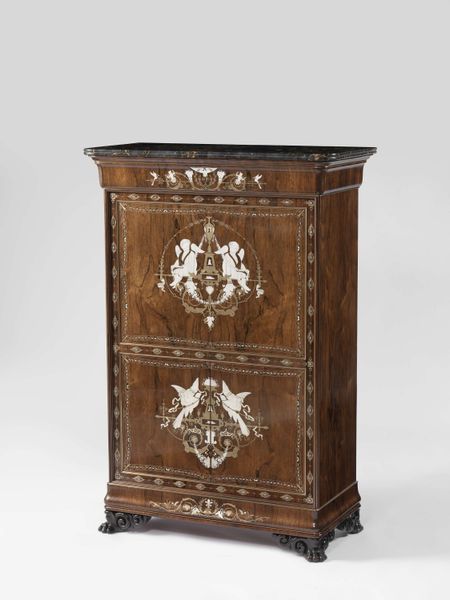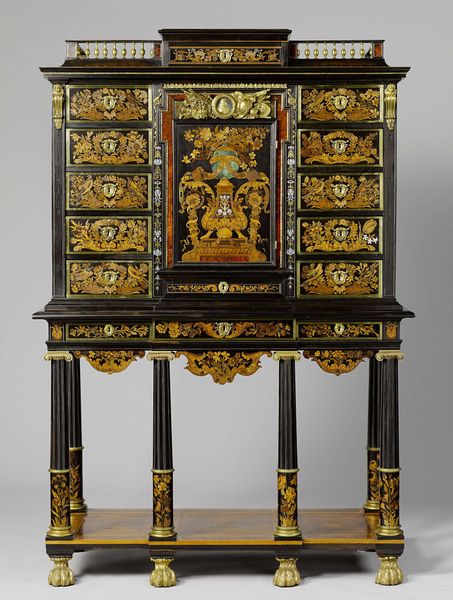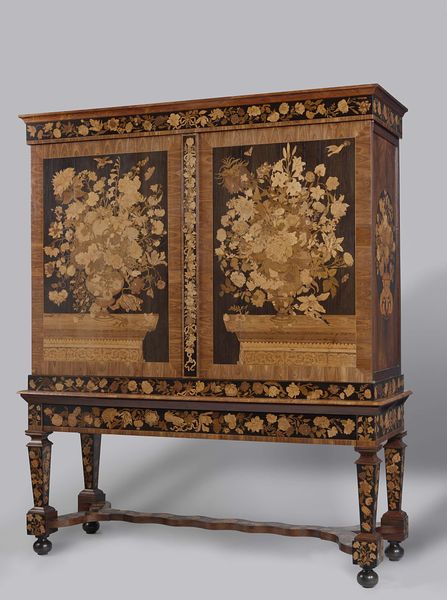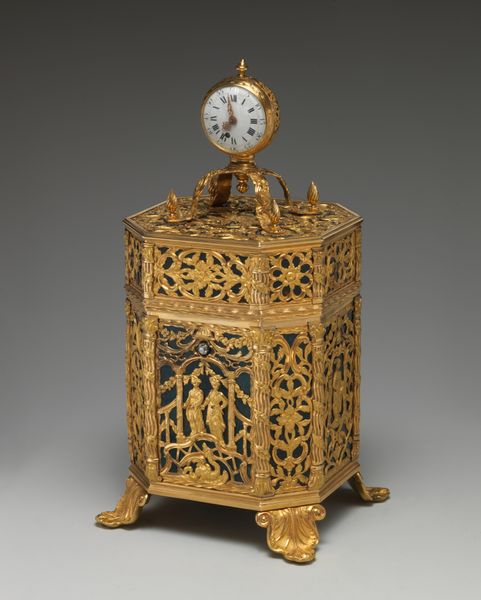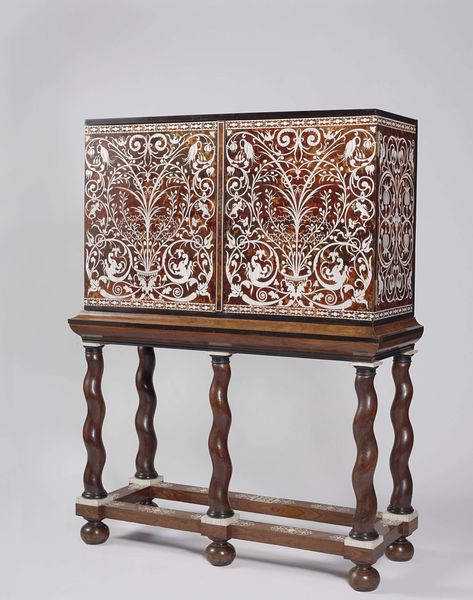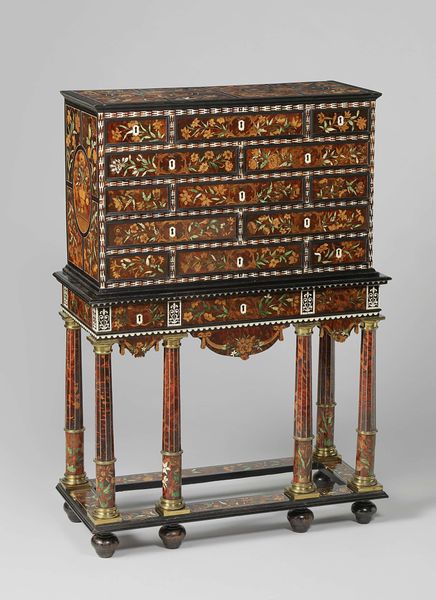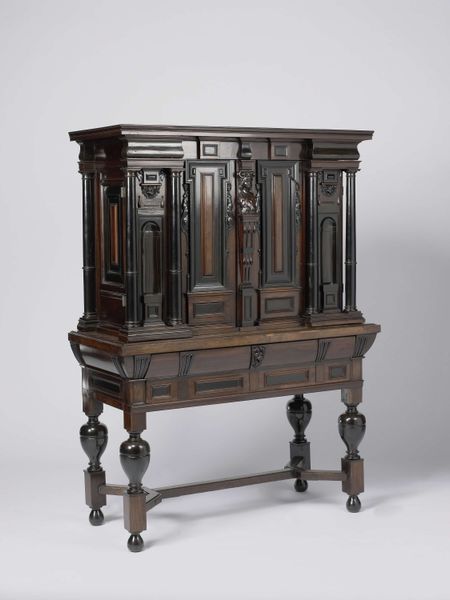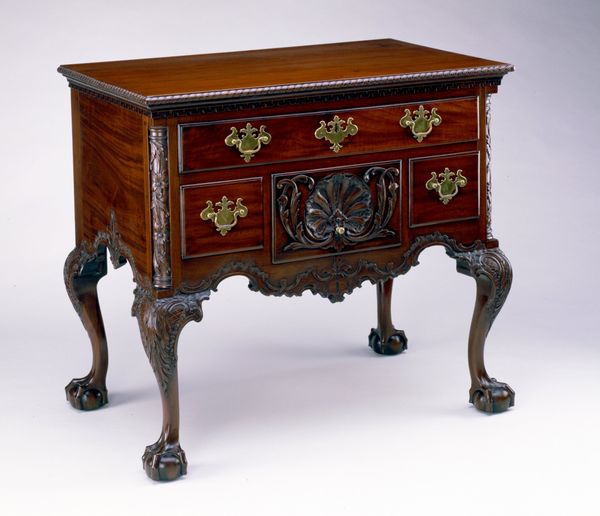
Dimensions: Overall (at base): 53 x 32 1/8 x 23 1/8 in. (134.6 x 81.6 x 58.7 cm); Overall (at widest edge of lectern): 53 x 30 11/16 x 21 5/8 in.
Copyright: Public Domain
Editor: So this is the "Bookstand," created in 1839 by Charles-Auguste Questel, currently residing here at the Met. What strikes me immediately is its incredibly ornate and detailed craftsmanship – the sheer dedication must have been intense. What do you see when you look at this piece? Curator: A whimsical cabinet of curiosities, really. It whispers of intimate scholarly pursuits and a real passion for craft. Questel has lavished this bookstand with an intensity of detail—each carving, each piece of metal inlay seems like a little love letter to the act of reading. Editor: It almost feels like a miniature architectural structure... Curator: Exactly! Look at the tiny columns, the delicate fretwork. He’s reimagining a grand architectural style in a domestic, even intimate, scale. I almost expect a secret compartment! What do you imagine being stored in here? Editor: Definitely some leather-bound first editions or, dare I say, maybe even a hidden stash of love letters? The style is very 'decorative arts,' right? But could you maybe also describe it from an ‘art movement’ point of view? Curator: Spot on. The 'Decorative Arts' showcases a desire to unite art with everyday objects, elevating the functional to the level of fine art. We can trace echoes of Arts and Crafts here, where beauty and utility were seen as inseparable. It invites you to slow down, to appreciate the tangible connection between creator and object, the physical intimacy of interacting with such a piece. Editor: It definitely inspires a new appreciation for how everyday objects can reflect artistry and personal touch. Thank you! Curator: My pleasure! Now, I am tempted to recreate a small version of this artwork...
Comments
No comments
Be the first to comment and join the conversation on the ultimate creative platform.
